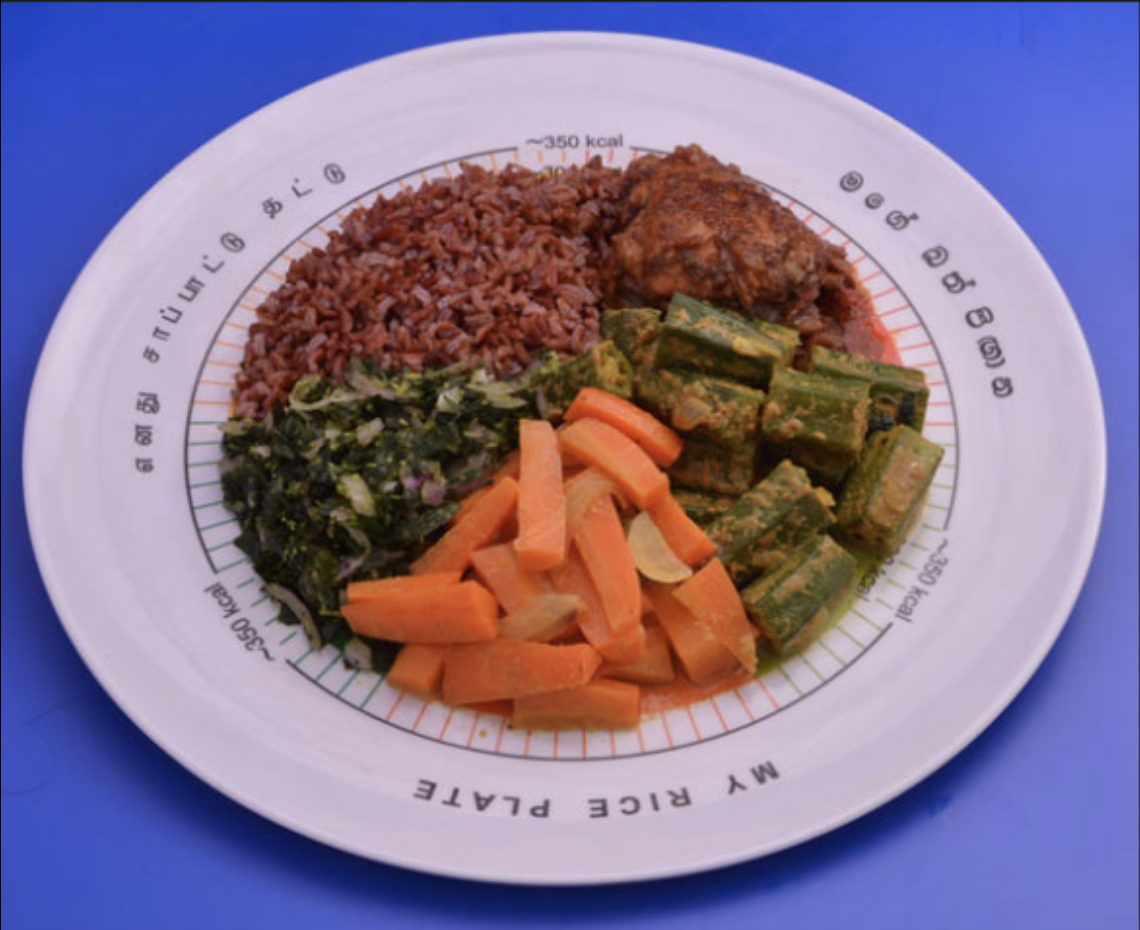Diet Plan for a Sri Lankan Patient with Diabetes

General Guidelines
- Carbohydrate Management: Focus on complex carbohydrates like red rice and yams.
- Portion Control: Use the plate method—half vegetables, one-quarter protein, one-quarter carbohydrates.
- Low Glycemic Index (GI): Choose low-GI foods to prevent sugar spikes.
- Healthy Fats: Include moderate amounts of coconut and sesame oil.
Sample Meal Plan
Early Morning
- Drink: Warm water with a dash of lime or a cup of plain tea
(no sugar).
Breakfast
Option 1:
- 1 small bowl of red rice or kurakkan porridge (low GI).
- Coconut sambol with a sprinkle of chili and lime.
- 1 boiled egg or small piece of fish curry (lean protein).
Option 2:
- 2 string hoppers (made with red rice flour).
- Dhal curry (moderate portion).
- Side of sautéed greens.
Mid-Morning Snack
- 1 small handful of roasted chickpeas or a small banana (Anamalu variety).
Lunch
Main Meal:
- 1 cup of red rice or boiled manioc.
- 1 serving of fish or chicken curry (lean and without excess oil).
- 2–3 types of non-starchy vegetables (e.g., drumsticks, bitter gourd, pumpkin curry).
- Salad with cucumber, tomato, and onion, dressed with lime juice.
- 1 teaspoon of coconut oil for flavor (optional).
Afternoon Snack
Option 1: A small cup of unsweetened yogurt or a glass of buttermilk (Moru).
Option 2: A handful of unsweetened kurakkan or sesame crackers.
Dinner
Option 1:
- 1 chapati (made with whole wheat or kurakkan flour).
- Dhal curry or a small piece of grilled fish.
- Non-starchy vegetables (e.g., sautéed greens or cucumber salad).
Option 2:
- 1 bowl of boiled green gram or chickpea salad with grated coconut and lime.
Bedtime Snack
- ½ cup of milk (low-fat or unsweetened).
Key Tips on diet for a Sri Lankan Patient with Diabetes
1. Control Starchy Foods: Limit portions of rice, breadfruit, manioc, and potatoes.
2. Incorporate Vegetables: Use local varieties like bitter gourd, okra, and spinach.
3. Avoid Sugary Foods: Cut back on jaggery, sweets, and sugary drinks like faluda.
4. Choose Healthy Cooking Methods: Steam, boil, or grill instead of frying.